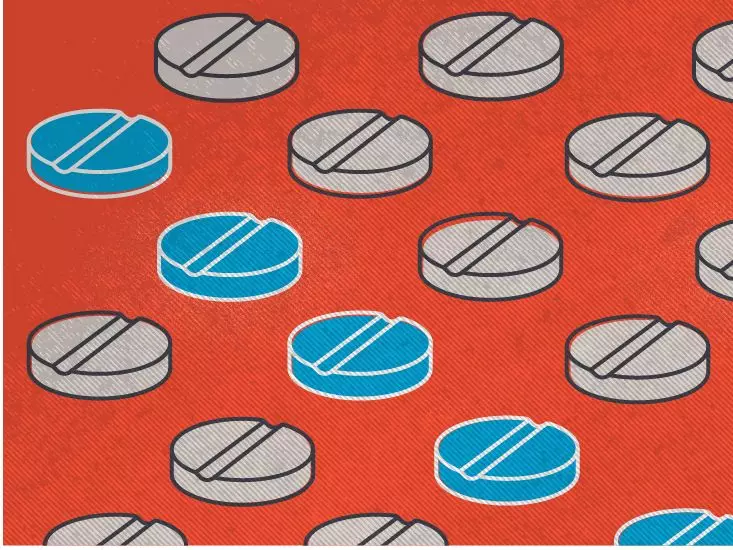In the realm of modern medicine, the discovery of targeted therapies like Rubraca has revolutionized treatment options for conditions such as ovarian and prostate cancer. While these therapeutic advancements bring hope, it is crucial to acknowledge that they also come with a host of potential side effects. Being informed about these effects not only helps patients navigate their treatment journey but also empowers them to engage proactively with their healthcare providers.
Rubraca is known for its efficacy in targeting cancer cells, but it’s equally important to understand the spectrum of side effects it may induce. These side effects can significantly range from mild, temporary discomforts to severe complications that can necessitate immediate medical attention. Patients starting treatment should approach it with a comprehensive awareness of the possible physiological responses their bodies might encounter.
Commonly Reported Side Effects: Real Experiences Matter
It is essential to recognize that the experiences of Rubraca users can vary tremendously. Some of the typical side effects noted in clinical settings include nausea, fatigue, skin reactions, and diarrhea. For patients receiving Rubraca, these adversities can occur at different intensities depending on individual factors such as overall health status and existing comorbidities.
For instance, nausea and vomiting are frequently reported among those undergoing therapy with Rubraca, often detracting from patients’ quality of life. Although manageable through lifestyle adjustments and pharmacological aids, these symptoms can still pose significant barriers to adherence to the treatment regimen. Adopting strategies like frequent, smaller meals and avoiding greasy food can mitigate these effects, yet patients must remain vigilant and communicate openly with their healthcare teams about any persistent issues.
More Than Mild: Serious Side Effects Demand Attention
While many side effects may initially appear mild, it is critical to monitor them for exacerbation into severe complications. For instance, Rubraca can lead to reductions in blood cell levels, bringing forth conditions such as anemia and thrombocytopenia. These conditions can escalate into serious health hazards, emphasizing the need for routine monitoring of blood parameters during treatment.
Anemia might manifest subtly; however, symptoms like fatigue and weakness can significantly impair daily functions. Conversely, thrombocytopenia can lead to an increased tendency for bleeding, which is not only uncomfortable but can have grave consequences. Symptoms such as unusual bruising or gum bleeding should be flagged immediately to healthcare providers. The corresponding increase in clinical vigilance in managing these side effects can markedly improve patient outcomes.
Allergic Reactions: Navigating Potential Risks
Though rare, allergic reactions to Rubraca merit serious consideration. It’s intriguing to note that the clinical trials for the drug did not report substantial instances of such reactions, yet real-world observations reveal a different narrative. Patients may experience a spectrum of allergic symptoms that can range from mild skin irritations to life-threatening anaphylactic shocks. This dichotomy highlights the complex nature of medication responses and the necessity for patients to stay attuned to their bodies.
The guidance surrounding allergy management emphasizes a proactive approach—patients experiencing mild reactions should promptly consult their healthcare providers, while severe symptoms warrant immediate intervention. Creating an open dialogue with providers ensures that patients remain safe while navigating their treatment—whether that involves adjusting the dosage or even switching medications.
Patient Empowerment in Managing Side Effects
Coping with side effects demands more than passive acceptance; it calls for empowerment through education and open communication. When patients actively engage with their healthcare teams, they pave the way for personalized care that addresses their unique experiences with Rubraca. Sharing individual side effect narratives can contribute invaluable insights that improve the collective understanding of medication impacts and play a vital role in shaping future treatment protocols.
Moreover, patients should not hesitate to report their experiences to the FDA through channels like MedWatch. By doing so, they contribute to a broader dialogue surrounding drug safety and efficacy that ultimately benefits everyone.
Harnessing the power of knowledge in navigating the side effects of Rubraca sets the stage for a more effective and supportive treatment journey. Embracing open communication about side effects and proactively managing them fosters an environment of trust and collaboration between patients and healthcare providers, ultimately leading to better treatment outcomes and enhanced quality of life.


Leave a Reply